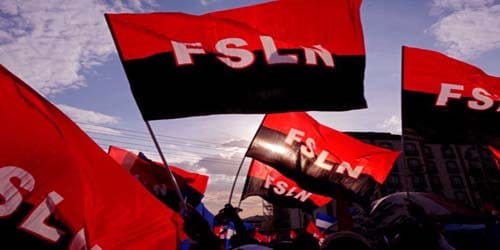The Sandinista National Liberation Front is a socialist political party in Nicaragua. The FSLN was founded in 1961 as a communist-backed guerrilla group of various opposition organizations. Its members are called Sandinistas [Sandinistas] in both English and Spanish. The party is named after Augusto Cesar Sandino, who led the Nicaraguan resistance to the US occupation of Nicaragua in the 1930s. The party was first in power from 1979 to 1990 as part of the ruling junta for national restructuring. With a vote out of power in 1990, it was re-established in 2006 with the re-election of the longtime leader of President Daniel Ortega (Jose Daniel Ortega Saved era).
The FSLN overthrew Anastasio Somoza Debele in 1979, ending the Somoza dynasty and establishing a revolutionary government in its place. Its attacks on the Nicaraguan National Guard from sanctuaries in Honduras and Costa Rica in the mid-1970s were so deadly that Somoza carried out bloody resistance against the Sandinistas. Fonseka and Meyerga were assassinated, and the FSLN split into three tendencies, or there was a difference of opinion between these groups as to whether the group should organize revolutionary cells only in cities, gradually gaining support across the country or merging with other political parties in a growing insurgency. Following the resignation of the central members from this junta, the FSLN assumed exclusive power in March 1981. They established mass education policies, devoted significant resources to health care, and promoted gender equality but faced international criticism for human rights abuses, genocide, and oppression of indigenous peoples. During the Contra War, the Sandinistas arrested censored publications (including the United States, FDN, and ARDE) for allegedly collaborating with the enemy against the militia and suspected publications. In 1984, the FSLN won more than 60 of the 96 seats in the new National Assembly and sent Daniel Ortega to the presidency in an election that drew widespread criticism for its lack of protection from opposition parties. In 1990, exhausted by war and economic despair, the Nicaraguan people voted for the 14 parties of the National Opposition Union, which formed the government and after the Sandinistas left power.
During the administrations of Alemen (1999–2001) and Enrique Bolaus (2002–2007), the FSLN held about 40 percent of the National Assembly and important municipal and divisional offices throughout the country. The FSLN regained power in 2006 after its leader Ortega was elected president. The party also won a majority in the legislature. In the 2006 Nicaraguan general election, former FSLN President Daniel Ortega was re-elected president with 38.7% of the vote compared to 29% for his top rival, bringing the country’s second coalition government after other parties won 17 years of elections. Ortega and the FSLN were re-elected in the November 2011 presidential election and in November 2016.
















